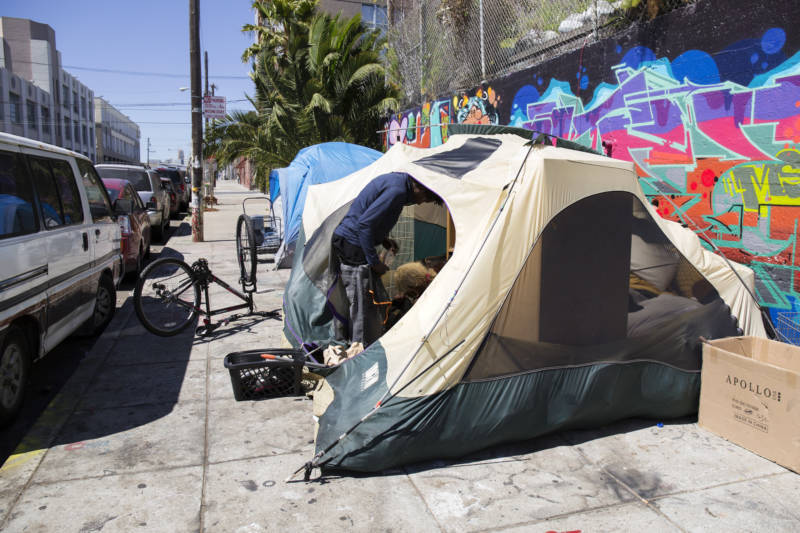This much is clear: For many, the California Dream has been shrunk down to keeping a place to live.
According to analysis by the National Low Income Housing Coalition, California has only 22 affordable and available rental homes for every 100 extremely low-income households. Affordability in this case means total housing costs are at or below 30 percent of area median income.
Put another way, the state is short more than a million rental units that are affordable and available to extremely low-income Californians. “That probably describes more than any other reason why we have a homelessness crisis in California,” Kushel said.
About 29 percent of California renters spend more than half their income on rent, according to a study from the Joint Center for Housing Studies of Harvard University. Paying more than about a third of income on housing can make it hard to afford basics like food, clothing, transportation and health care, according to the U.S. Department of Housing and Urban Development.
In Sacramento, households making half of the median income or less spend 62 percent of their income on rent according to the California Housing Partnership Corp., an agency created by the state Legislature to help preserve affordable housing.
In San Diego, that rises to 69 percent. In Orange County, people making half of the median income or less spend 78 percent on housing.
For very low-income Californians, budgeting gets bleaker. In Los Angeles County, there are 600,000 Los Angeles County residents that spend 90 percent or more of their income on housing, according to an analysis by the nonprofit Economic Roundtable. The group found similar rates of extreme rent burdens in Santa Clara County.
“These are areas where housing is expensive and incomes are polarized, and people at the bottom of the income distribution are having a really tough time keeping a roof over their heads,” said Daniel Flaming, president of the Economic Roundtable, a research group based in Los Angeles.
“They probably are on food stamps, they probably get Medicaid, they may get food from food banks as well,” Flaming said. “But it’s extremely difficult. Virtually all of the liquid resources of the family are going to pay for rent. And if a shoe drops, if someone gets sick or someone loses a job or if someone leaves the household that’s contributing to paying rent, then that family can easily find itself on the street.”
According to UCSF’s Kushel, many cities have had some successes getting people who are homeless into housing, but “what we’ve done much less of a good job is preventing new people from falling into homelessness.”
“The first and most important thing,” said Kushel, “is to act and act quickly and aggressively to create more housing that’s affordable.”
Building in California can be a lengthy and expensive process. According to the Terner Center for Housing Innovation at UC Berkeley, the cost of building a 100-unit affordable housing project in the state was almost $425,000 per unit in 2016. That’s up from $265,000 per unit in 2000.
At the same time the cost of building has jumped, redevelopment and state funding for affordable housing development shrunk. According to the California Housing Partnership Corp., redevelopment and state funding declined by about $1.6 billion between 2008 and 2016.
So some California cities are trying innovative ways to prevent and curb homelessness. In June, San Francisco voters approved a proposition to provide legal assistance to tenants facing eviction. There’s a pilot program underway in Los Angeles — also focused on keeping residents from eviction. Santa Monica is in the middle of a pilot program that provides rent assistance to low-income seniors. Oakland is considering taxing vacant properties in an effort to help increase housing supply.
Much of the focus in the last decade has been on getting homeless people housed, according to Steve Berg from the National Alliance to End Homelessness. Today, “there’s a lot more interest in prevention,” Berg said. “More people are wanting to know what they can try out and what they can do.”
The California Dream series is a statewide media collaboration of CALmatters, KPBS, KPCC, KQED and Capital Public Radio with support from the Corporation for Public Broadcasting, the James Irvine Foundation and the College Futures Foundation.


